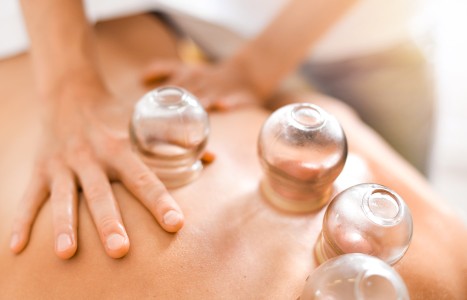Whether you accept it, avoid it or live somewhere in between, insurance coverage has become a defining issue for our profession. Patients increasingly expect to use their benefits, practitioners want to be compensated fairly for their time and expertise, and the system itself remains – at best – fragmented. The encouraging news is that coverage has expanded in meaningful ways. The challenging news is that reimbursement, across the board, remains inadequate.
It’s Hip to Treat OA With Acupuncture
- Acupuncture can be extremely effective in not only reducing pain, but also preventing the further acceleration of hip arthritis.
- The majority of patients I encounter with osteoarthritis of the hip present with patterns of kidney and liver deficiency with accompanying blood stasis.
- Due to the location of the pain and joint damage, the Gallbladder Meridian is most often used, along with the Liver Meridian.
Hip pain due to osteoarthritis is an extremely common condition for an acupuncturist to encounter in a clinical setting. Most often due to a degeneration of the articular surface of the glenohumoral joint due to “wear and tear,” osteoarthritis of the hip typically presents around the age of 50-70 with a wide range of signs and symptoms.
Most often the patient will complain of pain the hip area which radiates into the groin; however, the pain can often radiate into the lower back. Pain is typically aggravated by exercise and weight-bearing activities, and relieved by rest.
I see this condition quite frequently in my clinical practice and treat it typically with a combination of acupuncture, herbal medicine, and physical therapies. In this article, let’s focus on acupuncture, which can be extremely effective in not only reducing pain, but also preventing the further acceleration of the hip arthritis.
TCM Presentation
The majority of patients I encounter with osteoarthritis of the hip present with patterns of kidney and liver deficiency with accompanying blood stasis. These patterns lead to qi and blood stagnation in the channels, and can also be categorized via the concept of “bi syndromes” related to heat, cold, and damp. Evaluating the appropriate pattern differentiations is key in these cases in order to more effectively choose appropriate point prescriptions and needle technique.
It is important to do a thorough physical examination including palpation along the meridians to locate tender points and areas of numbness. The Thomas test is also an important physical examination test used to assess for hip flexion contractures or hip flexor tightness, which may be contributing to gait disturbances and compensatory movements / postures.
Treatment Approach
Hip OA is typically treated at the level of the tendons, ligaments, and bone in an attempt to improve the flow of qi and blood within the channels and collaterals to stimulate healing and pain relief. Due to the location of the pain and joint damage, the Gallbladder Meridian is most often used, along with the Liver Meridian.
Gallbladder Meridian Points: The Gallbladder Meridian crosses over the hip area and the pain from OA of the hip is often referred throughout the Gallbladder Meridian. I often bleed GB 44 with simple needle insertion initially prior to needling other points in order to stimulate the flow of qi and blood throughout the meridian. After this, I typically use points along the meridian which align with the unique pattern presentation of bi syndrome, as well as blood stasis.
GB 30 is an obviously important point, being so close to the area of joint damage / pain, and has the actions of activating the channel and alleviating pain, benefiting the hip and leg, and dispelling wind-damp. I almost always combine GB 30 with GB 31 and GB 34. GB 31 has the actions of eliminating wind, alleviating itching, and strongly activating the channel / alleviating pain. GB 34 strongly benefits the sinews and joints, activates the channel / alleviates pain, spreads the liver qi, and clears liver / gallbladder damp heat.
This three-point prescription of GB 30 + GB 31 + GB 34 is extremely effective for targeting many important underlying issues related to OA of the hip and is almost always implemented in my clinical practice for this presentation.
Blood Stasis and Pain: In almost any condition involving chronic pain and joint degeneration, the issue of blood stasis must be addressed. Many areas of joint tissue are avascular and suffer from chronic inflammation, which inhibits the flow of blood into the joint tissue.
Local points close to the joint tissue are of course important for targeting this issue; as well as Ah Shi points around the hip area and meridian areas related to pain. Four often-overlooked points I frequently use to target blood stasis in cases of hip OA are Sp 3, Sp 10, Sp 21, and LI 11.
Sp 3 is the Shu Stream / Yuan Source point of the Spleen Meridian and has the actions of tonifying the spleen, resolving dampness / damp heat, and harmonizing the spleen / stomach. It also has the unique action of targeting pain of the knee, thigh, and lumbar area, all of which can contribute to systemic pain issues throughout the body.
Sp 10 strongly invigorates blood / dispels blood stasis, cools the blood, and moves the blood throughout the entire leg area. Sp 21 is typically used with moxa and strongly regulates qi and blood, benefits the sinews / joints, and benefits the lateral costal region. Moxa on this point can strongly move qi and blood throughout the entire body and is highly effective for pain throughout the leg and lumbar region so often connected to OA of the hip.
LI 11 has the actions of clearing heat, cooling the blood, eliminating wind, alleviating itching, strongly regulating qi / blood stagnation, and alleviating pain. I always strongly stimulate this point on both arms for all cases of OA of the hip, with excellent results.
Sample Point Prescription
Clinicians should closely evaluate each patient’s unique pattern presentations, as well as areas of pain throughout the hip area and meridians which cross through the leg and hip area, in order to effectively create point prescriptions in cases of OA of the hip. A typical pattern presentation of qi stagnation / blood stasis with damp heat bi / liver / kidney deficiency could potentially be treated with a prescription as follows:
Bleed GB 44 + LI 4 + Liv 3 + LI 11 + GB 30 + GB 31 + GB 34 for 20 minutes; then remove needles and apply moxa to Sp 21 for 10 minutes. In most cases of OA of the hip, I treat twice a week for at least two weeks, then once a week for a month and evaluate. Pain levels and mobility should improve after two to three acupuncture sessions, which can be very encouraging for the patient.
Author’s Note: I will address herbal medicine treatment of OA of the hip in a follow-up article.



